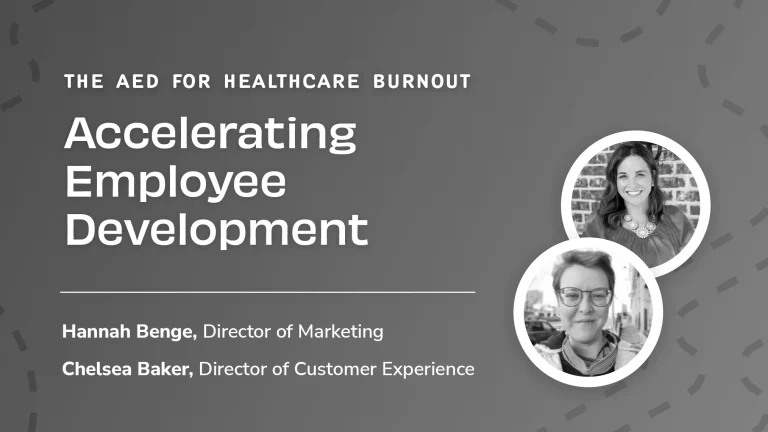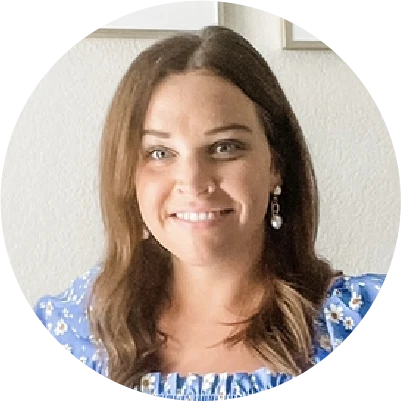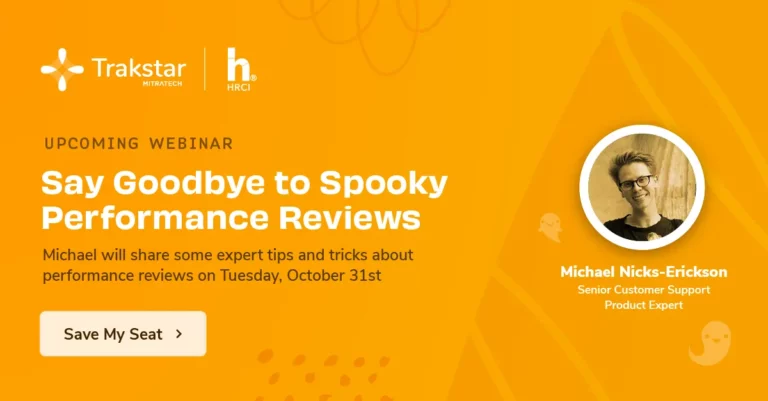
On-Demand Webinar
Fill this form to access the webinar.
Webinar Description
Key Takeaways
Session Speakers
Additional Resources
The AED For Healthcare Burnout
Employee development is at the top of everyone’s minds, but it is even more urgent for Human Resources departments in the healthcare industry.
Why? Having an employee development program is a proven strategy to keep employees happy, keep up with training programs, monitor employee performance, and keep employee turnover rates low.
But why healthcare, why now? Haven’t they always had the same career goals, opportunities, and problems? No, the world is different now.
A few years ago, healthcare professionals were regarded as heroes – parades were thrown in their honor, pots and pans clanged throughout city streets when they changed shifts, and everyone thanked them wherever they went. Employee recognition was the name of the game – and there was at least one opportunity a day to give it.
Even then, they were tired and overworked. Their career goals often included staying in healthcare, but employee satisfaction levels were low.
Now, you are handling a workforce that gets mistreated by the general public, called liars when they talk, and face overpacked rooms and a lack of resources when they get to work. This is on top of the pressures they face from everyday life. It’s hard to think that one organizational development day could fix that.
Why? Burnout – your workers are quitting, making mistakes, slipping into addiction, and it makes it harder for everyone. Putting every single employe on an employee development plan at the same time, or suddenly encouraging employee training without any follow through isn’t enough.
Healthcare burnout impacts all of us. At our webinar, The AED for Healthcare Burnout: Accelerating Employee Development , we talked more about identifying and reducing burnout in your workforce.
Watch our on-demand webinar and discover:
- How can you identify burnout early
- Why you should care about burnout as a Human Resource leader or manager
- How you can turn around the burnout process
- Easy steps to avoid burnout amongst new hires
Studies have shown that nearly 70% of healthcare workers are at risk for burnout – and the number keeps growing. The COVID-19 pandemic brought those numbers into focus, but burnout has been a problem in healthcare for a long time.
If you are struggling to keep employees, seeing employees succumb to addiction or poor behaviors, noticing an uptick in patient complaints and careless mistakes, or you are facing a workforce that is unengaged, overworked, and tired – you are dealing with burnout.
Watch our on-demand webinar and discover:
- How can you identify burnout early
- Why you should care about burnout
- How you can turn around the burnout process
- Easy steps to avoid burnout amongst new hires
Studies have shown that nearly 70% of healthcare workers are at risk for burnout – and the number keeps growing. The COVID-19 pandemic brought those numbers into focus, but burnout has been a problem in healthcare for a long time.
If you are struggling to keep employees, seeing employees succumb to addiction or poor behaviors, noticing an uptick in patient complaints and careless mistakes, or you are facing a workforce that is unengaged, overworked, and tired – you are dealing with burnout.
Key Takeaways
1
How can you identify burnout early?
2
Why you should care about burnout
3
How you can turn around the burnout process
4
Learn easy steps to avoid burnout amongst new hires
Session Speakers

Chelsea Baker
Director of Customer Experience
Chelsea Baker is the Director of Customer Experience at Trakstar. Day to day she’s working to solve sticky problems and increase customer happiness, or convincing you to read a new book. She loves talking about all things related to hiring, and managing remote teams.

Hannah Benge
Director of Marketing
Hannah is Trakstar's Director of Marketing. She loves talking about all things as it relates to managing highly effective teams and cultivating a culture your employees love. Daily, she works on thought leadership, strategy, and industry development.


